|
Vought F7U-3 Cutlass
by Fulvio Felicioli
|
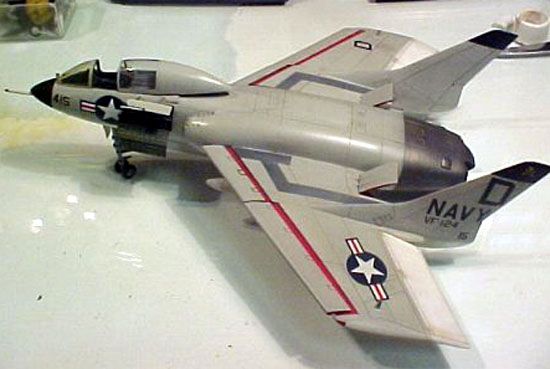 |
|
Vought F7U-3 Cutlass |

Hobbycraft's
1/48 scale F7U-3 Cutlass is available online at
Squadron
The Vought F7U-3 Cutlass project was born in June, 1945.
The Cutlass was the first tail-less fighter of the US Navy, the first
Navy fighter carrying a swept wing and the first Navy fighter equipped
with afterburners. It was also the first Vought design with a
pressurized cockpit.
Although the Cutlass proved to be a sturdy aircraft, it was a poor
fighter. Many problems plagued the airframe throughout its career. These
included troubles with the forward landing gear, stability,
less-than-desirable landing attitude, occasional flame-outs during
cannon firing, bad visibility from the cockpit and some serious issues
with the center of gravity of the airframe which lead to uncontrollable
spin, forcing a number of pilots to eject.
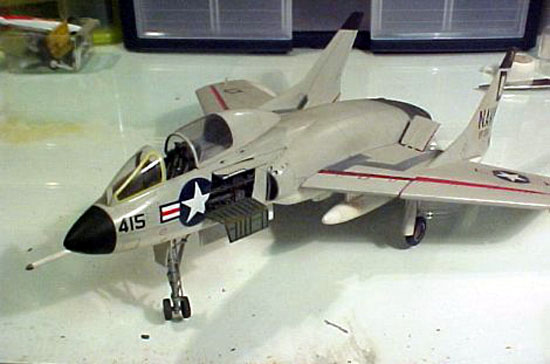
Further, the chronic shortage of thrust of the engine powerplant
forced the Vought engineers to install a couple of afterburners to the
J46 in order to guarantee take-off from the carrier. Even this
modification never totally solved the problem, and the Cutlass was not
underpowered throughout its operational life.
Replaced by the A4D and F9F-8, the Cutlass sunk into aviation
obscurity. Nevertheless, It deserves a bit of attention by the modelers
interested in the US Navy history.
|
The Hobbycraft Cutlass in 1/48 Scale |
The Hobbycraft kit is quite crude but permits a good reproduction of
a F7U-3 with some minor modification.
The shape is correct, flaps and slaps are separated stuff and surface
detail is engraved.
The bad points are a very basic cockpit and very thick transparent
parts. Keeping this in mind, with the Naval Fighter on my workbench, I
started work on the kit.
Cockpit
As mentioned earlier, the cockpit detail is sparse and inaccurate.
The ejection seat is a mass of shapeless and hopeless plastic, and the
instrument panel is wrong. I scratchbuilt both of these items with
plasticard and a set of Waldron’s instruments.
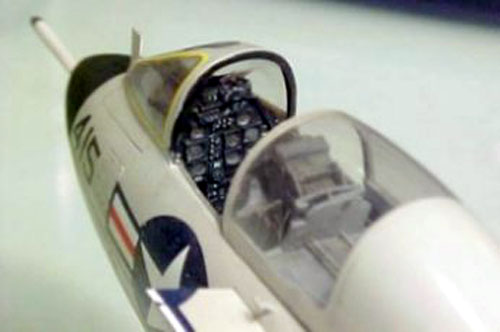
Early ejection seats were no more than a set of metallic plates
joined together, so I followed the same approach for the reproduction
using plasticard cut in strips and some copper details for the details.
The panel is a sandwich of plasticard and clear film, drilled to install
the Waldron instruments. Some of the cockpit’s details come from a
Reheat photoetched sheet.
I noticed that the forward undercarriage bay is not deep enough, so I
scratchbuilt it again with plastic sheets cut in the correct shape. The
leg of the front undercarriage is obtained from aluminum rod, detailed
with plastic parts.
Left Avionics Bay
Ginter’s “The Naval Fighter” provides some very good drawings and
pictures of the Cutlass’ avionics bay. The temptation was strong enough
to persuade myself to accept the challenge to reproduce at least one of
them in the open position.
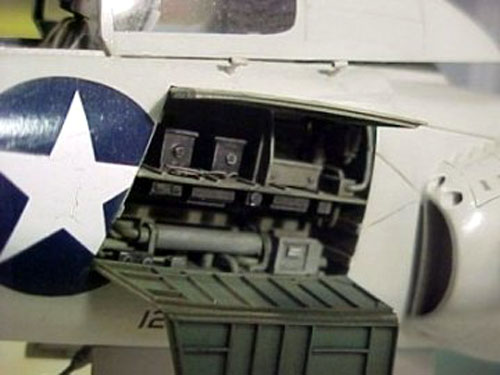
Needless to say, it is totally built from scratch.
Additional Modifications
The kit construction is quite straightforward, the only difficulties
being the join between the fuselage and the air intakes which require
some adjustment to obtain a proper fit. I decided to cut the airbrakes
and to build a vacuform canopy.
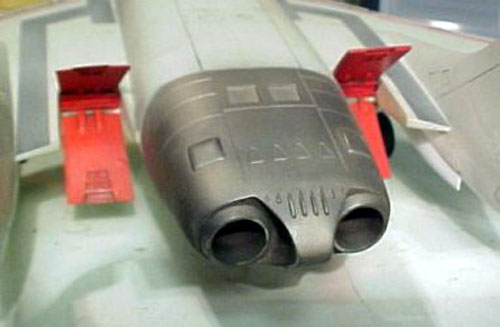
The refuel probe is an aluminum pipe cut and fitted with the
reproduction of the valve which comes from my spares box
My Cutlass was assigned to the VF-124 in the 1960s. The livery was
the standard Navy camouflage of the period - Light Gull Gray over White.
The airbrakes inside was in Red. For the avionic bay interior I choose
the classic Interior Green, but this interpretation is opened to any
comments. Some pictures on the book seem to confirm this color, but with
the early jets who know.
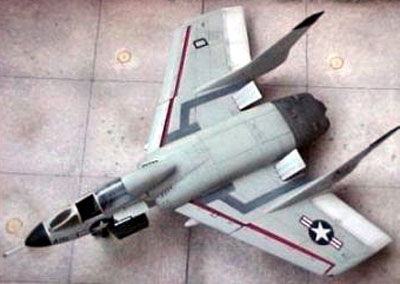
Decals come from an old Superscale sheet.
The afterburners section is painted with Testors Metallizer. My
references show any red warnings on the intakes and no fading of the
paint job on this specific aircraft. For this reason I apply only a
light wash with oil colors on the model to highlight the recessed
panels.
Hobbycraft’s 1/48 scale F7U Cutlass is a demanding model!
If you ever want to put a Cutlass in your collection of early jets,
you must be ready to spend a lot of time and to at least scratchbuild
the cockpit. However, the kit is quite impressive once finished and now
sit between my Panther and my Fury, proudly displaying its crossed
cutlasses on the tails.
|
References and Additional Information |
http://mujweb.atlas.cz/zabava/aerodetail/html/letadla_jet/f7u.htm
http://www.skytamer.com/photos/gallery11/20010507-103.htm
http://homepages.tesco.net/~veronica.hubbard/Walkrounds/Cutlass/cutlass.html
Click the
thumbnail below to view larger images:
Text, Images and Model Copyright © 2002 by
Fulvio Felicioli
Page Created 23 February, 2002
Last Updated
04 June, 2007
Back to HyperScale Main Page
Back to Features Index |
Home
| What's New |
Features |
Gallery |
Reviews |
Reference |
Forum |
Search